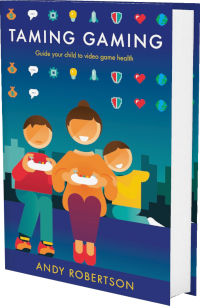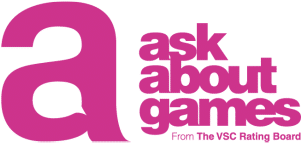 Android
Android iOS
iOS Mac
Mac Switch
Switch Wii
Wii Wii U
Wii U PC
PC PS4
PS4 PS5
PS5 Xbox One
Xbox One Xbox X|S
Xbox X|SWe've documented 36 accessibility features for Flamme Rouge, including Playable Without Hearing, No Pressured Communication, No Pressured Reveals, Audio Cues Mirrored Visually (Or no critical audio signals) and No Close Inspection Disadvantage. Its accessibility is strongest in Physical and Getting Started but it also has features in Reading, Difficulty, Visual and Audio to reduce unintended barriers.
This report is created with input from accessibility experts and the player community to help people find games that have the accessibility features they require. Once you have found potential games on the database, there are excellent specialist accessibility sites that offer in-depth reviews to guide your purchasing decisions.
Our accessibility examiner, Andy Robertson, first checked Flamme Rouge accessibility 14 months ago.
 Accessibility Notes
Accessibility Notes
Being able to remember the rough card mix in your deck there is a small memorisation advantage. Apart from which cards remain in each player's deck, the state of the game is largely visible at all times. Although colour-blind players may need to confirm which riders are which colour, there's not a big tactical disadvantage to this. Because it's a game about understanding the probability of getting good cards from your deck, there is some mathematical advantage.
There's a companion app reference aid that enables you to keep track of riders and team points when playing multiple stages in a row.
The first player in each round is signified by the leading rider. The nature of each player's finite deck of energy cards, and the slipstream rule provide a degree of catching up for trailing players.
You need to shuffle your deck each time you have depleted your deck, to shuffle the discards ready for use. You can describe the game state but the positional complexity is a barrier to using this information to play the game.
Report informed by Meeple Like Us assessment which offers an extended review.
 Game Details
Game Details
Release Date: 01/01/2016
Skill Rating: 7+ year-olds
Players: 1-4
Genres: Race, Sequencing, Traversal and Push-Your-Luck
Accessibility: 36 features
Components: Board, Cards and Figures
Developer: Asger Granerud (@AsgerGranerud)
Costs: Purchase cost
 Difficulty
Difficulty
We've documented 4 accessibility features for Difficulty in Flamme Rouge which deal with how you can adjust the challenge of play.
Difficulty Options
Simple and Full Version: Game provides layered rules to enable the removal of elements for a simpler version of the game. Ideally, these are given non-stigmatising descriptors for example, "simple/complex" rather than "novice/expert".
No Hidden Information: All players can see the full state of the game at all times.
No Deceit Advantage: No game mechanic where players need to deceive each other to progress. This includes bluffing and lying.
No Colour Advantage: Game can be played without colour-blindness being a barrier to performance.
 Getting Started
Getting Started
We've documented 7 accessibility features for Getting Started in Flamme Rouge which deal with what support is offered to get started with the game.
Assistance Getting Started
These features aid your play of the game in terms of cognitive load on learning controls, dealing with pressure and coping with the environment and challenges.
Clear Manual: Game provides a manual that breaks play into number sections, groups information sensibly and uses illustrative pictures.
Electronic Version of Manual: A free online version of the manual provided by the publisher.
Reference Aid: In addition to the main rules, a succinct quick reference card is also provided for each player to remind them of key rules, actions and currencies. This may be a separate card or integrated onto the board or cards.
Assistance Progressing
These features aid your progress through the game offering different ways of managing your pieces and progression.
Play Order Tokens (Or play order doesn’t change): Where player order impacts the game or there are multiple play phases the game provides a means of keeping track of this. Includes provision of play order tokens or use of piece/board orientation.
Reaction-Time Not Critical: Individual game actions don’t need quick reactions. This means you don't need to quickly respond to events in the game or other players.
Low Pressure: Decisions aren’t time-limited so you can take your time with each action.
Catch Up Rule: Game includes catch up mechanics that give losing players a bonus or advantage to help catch up.
 Reading
Reading
We've documented 7 accessibility features for Reading in Flamme Rouge which deal with how much reading or listening comprehension is required, how well the game provides accessible text.
Reading Level
How much reading is required to play the game and how complex the language is.
No Reading: No reading is required, other than simple titles or numbers. The game either has no text or can communicate textual content with icons or other visuals.
Necessary Text Visibility
How clear are the required text or numbers to play the game.
Large Clear Text on Board (Or no text required): Text or numbers are large and clear font at least 8mm tall (22pt) on the board and any other elements that are at a distance to the player.
Large Clear Text on Cards (Or no text required): Text or numbers are large and clear 5mm tall (14pt) on the pieces that you can hold close to read.
High Contrast Text (Or no text required): Text or number colours contrasts to the background. The text in instructions and other information is presented in high contrast ideally with a solid background.
Primary and Secondary Text Distinguishable (Or no text required): Game separates non-essential flavour text from essential gameplay text, to ease comprehension. Includes games that don't have flavour text.
Information Orientation: You don’t have to read text, numbers or symbols upside-down to play the game effectively.
Clear Icons: Icons are used to simply communicate and highlight important graphical elements related to gameplay. This assumes good contrast and generally familiar symbols.
Similar Games With More Accessibility Features for Reading
If you want to play Flamme Rouge, but it doesn't offer the Reading accessibility features you require, this similar game extends the Reading accessibility:
- Colt Express (8 Reading Features)
 Physical
Physical
We've documented 10 accessibility features for Physical in Flamme Rouge which deal with how you interact with the game components and how accommodating these are of different requirements.
Pieces
How the game components accommodate interactions through touch, shape, texture and colour.
Components are Replaceable: Game components can be replaced with alternatives that meet an accessibility requirement, that don’t conflict with game mechanics (needing to pick randomly from a bag) or another physical aspect of the game (board indentations).
No Non-Standard Dice (Or No Dice): The game uses standard numerical dice, doesn’t need dice to play or ensures dice are readable by touch.
No Tiny Pieces: Game pieces are not very small. This doesn't cover cards. The target size for this is not less than 20mm wide and not less than 2mm thick.
No Paper Money: The game doesn’t use paper money.
Cards
How the game assists interaction, manipulation and management of game cards.
Large Card Size: Cards in the game at least the size of a standard playing card (64mm x 89mm). This ensures the cards work with accessibility equipment like card-holders and shufflers.
Standard Card Shape: Cards confirm to standard size so they work with card shufflers and other card management devices.
Limited Hand Management: You don’t need to hold more than 8 cards in your hand. This includes games with larger hands that require minimal in-hand card management.
No Right-Handed Advantage: Cards don't position key information in only top-left corners that favours right-handed in-hand card arrangements.
Placement
How the game assists interaction, manipulation, management and placement of game pieces.
Player Components Not Shared: Key components are not shared so you can organise them as best suits your needs. Keeping them close to you. Organising them in useful groupings.
Easily Verbalised Actions: The game is clearly labelled (landmarks, coordinates and so on) to make it possible to unambiguously describe game actions and relate those to the board or other pieces. This is useful for players who need others to move their pieces.
 Visual
Visual
We've documented 4 accessibility features for Visual in Flamme Rouge which deal with how well the game offers visual clarity and adjustments to accommodate visual needs.
Printed Visibility
How well the art on (and design of) components support a range of visual needs.
High Contrast Colours: Key information uses high contrasting colours between background and visual elements. This is a ratio of at least 4:1.
Component Identifiability
How easy it is to see and identify the components you need to work with to play the game.
Outline Key Elements: Game uses a highly distinctive visual silhouette for essential elements required to play the game. This may be from the shape of game elements or by applying a bold outline or backing colour. It may also be clear text if that is the only pertinent information
No Busy Backgrounds: Game board or cards have a simple or monochrome design to aid in identifying game elements when observed in play on top of the board.
No Close Inspection Disadvantage: If necessary, players can inspect similar pieces to distinguish them without time limit or risk of leaking gameplay intention.
Similar Games With More Accessibility Features for Visual
If you want to play Flamme Rouge, but it doesn't offer the Visual accessibility features you require, this similar game extends the Visual accessibility:
- Colt Express (5 Visual Features)
 Audio
Audio
We've documented 4 accessibility features for Audio in Flamme Rouge which deal with how the game supports player communication to meet a range of requirements.
Communication
How the game accommodates different styles of communication, particularly non-verbal.
Audio Cues Mirrored Visually (Or no critical audio signals): Where audio cues (soundtrack, player utterances and shouts) are critical for play, there are visual equivalents to ensure players with hearing impairments aren’t disadvantaged as a result of the loss of incidental sound.
No Pressured Reveals: No reliance on revealing actions or choices simultaneously. This ensures players who can’t perform the revealing action in real-time aren’t excluded.
No Pressured Communication: Game doesn’t require you to speak over (or louder or faster than) other players. The game includes gaps where only a single player is permitted to communicate and make their point.
Playable Without Hearing: You can play the game without the need to hear other players or sound made by game elements. Where other communication channels can be used if you have a supportive set of players, this is only included if communication can be low pressure.
Accessibility Report supported by VSC Rating Board, PlayabilityInitiative and accessibility contributors Andy Robertson












